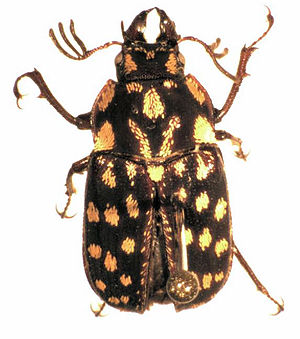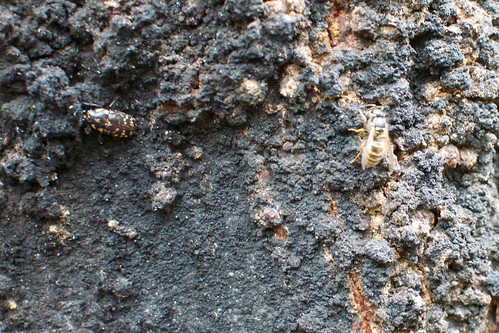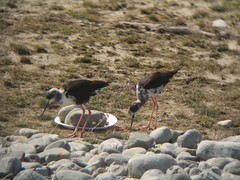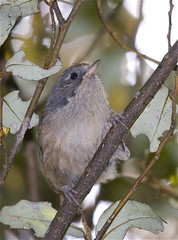Subject: Citizen science crowd-sources nature watching
Release date: Friday, 1 November 2013
Citizen science crowd-sources nature watching and discovers new stuff!
The New Zealand citizen science website NatureWatch NZ is celebrating over a year of people reporting their staggering variety of natural history discoveries.
Since it launched in August 2012, replacing a clunky 2006 predecessor, it has amassed over 32,343 records made by more than 540 observers. This week it passed the milestone of 50,000 photos online, including the very first photos added to the internet of many native invertebrate and fungi species.
NatureWatch NZ is dedicated to building a record of nature in New Zealand. It lets anyone add an observation of anything natural they've spotted anywhere, in the wild or the town, in the air, on land, or in the water. Observations with photos can then be identified and verified by a network of experienced amateur and professional experts involved in the project – and increasingly by the wider NatureWatch NZ online community.
The observations are building a vast storehouse of useful information about all species in the New Zealand environment, from birds to plants to insects to fungi. With the website getting around 100,000 page views per month, it’s becoming one of the most popular environmental science sites in New Zealand.
So what use is this vast collection of nature watching?
For a start, it crowd sources the collection of data in the same way that the SETI project helps look for life out in the stars. Instead of only a handful of scientists making observations, it spreads the load by letting anyone add an observation of something they've seen. And over 14,151 comments from members have added to the value of the observations. By doing so they provide a fantastic resource for scientists and researchers in NZ and around the world.
It’s also a valuable tool for environmental managers and biosecurity staff to monitor changes in wildlife and other biodiversity. In just one year, the NatureWatch NZ community has already discovered a new native moss species and recorded a handful of insects and fungi not previously known to be in New Zealand, plus inter-island range expansions of some pest insects.
Most crucially, it engages more people in being observant and informed about the world around them at a time when, more than ever, we need to understand and manage our environment more sensitively and sustainably.
Ecologist Colin Meurk says the website has created one of the most useful research tools he's seen. "NatureWatch NZ is more than just a website - it's a veritable treasure trove of fascinating, bizarre and surprising truths about our country. It draws people into the social medium aspect, making it fun to satisfy our natural curiosity; and perhaps it inoculates us against the modern diseases of virtual reality, environmental disconnect and Louv's nature deficit disorder. It combines our love of nature and technology."
Lincoln University ecologist Jon Sullivan used NatureWatch NZ in Lincoln’s biological diversity course this year. “Until now, nothing our students saw in their assignments was kept. With NatureWatch NZ, our students put all their observations online where their identifications are verified or corrected. Our students have easily added more observations to the internet of local animals and plants than everyone else in the last twenty years combined. Now we can really start to watch how nature is changing.”
NatureWatch NZ is run by the New Zealand Bio-Recording Network Trust, a charitable trust dedicated to recording the natural history of New Zealand, with funding from the New Zealand Government and other supporters like the Brian Mason Scientific and Technical Trust. It is led by a group of New Zealand biodiversity scientists and biodata IT specialists, in collaboration with the open source iNaturalist project from California. The Trust is now trialing the use of NatureWatch NZ in schools, where it can make every teacher a biodiversity expert.
To see the website in action, please visit www.naturewatch.org.nz
Some stand-out observations:
Released Tui named "The Bishop" spotted alive and well http://naturewatch.org.nz/observations/362046
Marine life makes home in old post hole http://naturewatch.org.nz/observations/373841
Tiny wasp released in Nelson in 1921 in a failed biocontrol introduction was rediscovered in Auckland http://naturewatch.org.nz/observations/356987
In July this year, the fourth record of the American gull, the Franklin’s gull, in New Zealand http://naturewatch.org.nz/observations/368420
In April this year, the big Noddy Flycap mushroom discovered in an urban Christchurch reserve, the first record for Canterbury, the second for the South Island, and the tenth collection ever in the world: http://naturewatch.org.nz/observations/357531
ends





















